Studio Monitor Switch: Alex Sterling — Upper West Side
Listen closely, and you can hear them – an emerging generation of engineers who care deeply about audio.
Among them is Alex Sterling, whose eponymous studio on the Upper West Side is evolving quickly. While the unique live room and flexible output impressed us plenty in a 2012 Sweet Spot, Sterling has clearly taken it all a step further.
Already a stickler for the critical listening experience, Sterling realized he could significantly upgrade accuracy and reduce energy-sapping ear fatigue in one fell swoop: with new monitors.
But arriving at what speakers to switch in wasn’t just a decision: it was a journey. As you’ll see, Sterling paid close attention to every detail of how he was hearing, and how he could do it better. Read on to see how he dissected his monitoring situation, but be aware – you’re about to get a whole new perspective on critical listening.
Behind the Scenes
A few months after my Sonic Scoop SweetSpot feature in mid-2012, I undertook a substantial renovation of my studio control room in order to increase its size and enhance its functionality and acoustics.
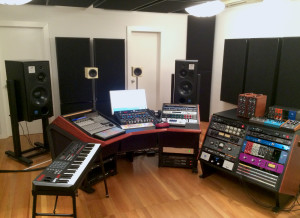
An enlarged control room went hand in hand with the monitor switch. (click on all photos to enlarge)
I was able to expand the control room by taking over an adjacent storage room and combining the two spaces. The renovation effectively doubled the control room volume and has made it far more comfortable and aesthetically pleasing, as well as more functional.
In addition to having more space for important studio equipment like a generously sized client couch, the overall acoustics and layout of equipment has been greatly enhanced. Part of the renovation work also included a complete overall of the control room acoustic treatments. I designed a custom layout of bass traps, broadband absorption, and diffusion using commercially available RealTraps and GIK Acoustics products.
Since doing this renovation my studio business and engineering work has grown to new levels and I am pleased to say that things continue to grow every year. Some of my recent projects include:
Producing an EP with electronic artist “Krychek” as well as mixing his upcoming album.
Orchestral string and woodwind recording for film composer Michael Bacon.
Voiceover and sound effect recording and post-production mixing for David Chesky’s “The Mice War” animated film adaptation of his opera by the same name.
Mixing and co-producing an upcoming hip-hop album from Zen Buddhist lyricist “Sikz Points“.
Mastering for various Downtown Records artists as well as a variety of independent artists here in the United States and abroad.
Recording and mixing for jazz albums from Matt Robbins, The Le Boeuf Brothers, Leon Boykins, Paul Jones, and Tyler Greenfield (featuring the celebrated Cuban vocalist Xiomara Laugart).
All in all, the business landscape for me is very busy and getting more so. I feel that working across genres and sectors keeps the work interesting and also informs my musical and sonic aesthetic. In the constantly changing music industry it is important to be versatile and able to respond to the needs of a diverse clientele.
Phase One: Moving On
For the last 5 or so years I used ADAM S3X-H 3-way midfields as my main speakers. I got some great work out of them and they served me well. I liked how detailed and clear they sounded. I felt that they gave me a lot of information about whatever I listened to.
They also had a great sense of clarity and openness in the upper midrange and treble which allowed me to hear a lot of detail in whatever I was recording, mixing, or mastering. In addition, they had a reasonably deep and impactful bass response, which was great to feel how the kick and bass behaved and to blast the client when they wanted to feel the music and rock out a bit.
However over time, as my ears and listening skills developed further, I had the realization that the ADAM’s weren’t giving me as much information as I had previously thought. I began to feel that the same upper midrange and treble openness was actually slightly artificial and a bit metallic and hard sounding. The bass response also felt a bit smeared and muddy at times.
The ADAMs seemed to put a sonic fingerprint on everything and made various mixes from different genres and sources all kind of sound the same; a bit harsh and a bit floppy and muddy in the lower midrange and bass.
Mixing was always a bit of a guessing game and sometimes physically ear fatiguing with the ADAMs because I often needed to make sounds extra bright and harsh so that they would translate to the outside world better. I also began to feel that I could do better in terms of having more audible bass extension to lower frequencies and improved low frequency and midrange precision. It’s hard to EQ the midrange and bass when you can’t tell if the source has an issue or the speaker itself is smearing it.
Overall I felt like I couldn’t trust the ADAMs anymore and as the saying goes, “trust is the foundation of a good relationship”…it was time for a change.
Phase Two: Picking a Pair
Working quickly, efficiently, and striving to do the best quality work I can for every project is the foundation of my engineering success. If I am to grow my business further, I need to have tools that will help me work even faster and make better-sounding music.
From the standpoint of running a sonic business I believe that part of staying ahead of the trend towards everyone doing it all themselves at home, is to offer artists and clients something that they mostly can’t get in their home studios; plenty of top level equipment in an excellent controlled acoustic environment along with personable and skilled engineering talent to help take their project to the next level sonically and musically.
I know some mastering engineers and serious audiophiles and I have heard some pretty amazing speaker/room systems over the years. I had already done a substantial amount of in-room acoustic treatment, so upgrading the main speakers was the logical next step forward.
I knew I wanted a more honest and neutral monitor with much lower distortion and substantially better low frequency extension and definition. The ADAMs I had were already pretty amazing speakers by most people’s standards and experience, but I wanted to make a giant leap to a whole other level of performance.
I am generally not a fan of separated subwoofer and satellite systems so I wasn’t considering doing a 2.1 setup the way some people do with smaller nearfields plus a sub. I don’t like hearing the physical disconnection between the deep bass from the subwoofer and the rest of the music coming from the satellites. Subwoofers are also tricky to setup properly and can cause translation problems if they aren’t really well integrated to the mains. This preference against subs led me to want a truly full range speaker for left and right channels.
I also knew that I wanted to buy an active powered monitor, mostly because I don’t want to engage in power amp shootouts for the rest of my life…but also because with powered speakers, the amps, drivers, and crossovers are an integrated system that can be designed as a whole to achieve better performance in many cases.
I provide a variety of services to my clients, ranging from production and recording to mixing and mastering. All of these services require accurate monitoring but in particular the process of mastering is most demanding.
Speakers used for mastering should ideally give the engineer a completely clear and honest presentation of the music with as little distortion and tonal coloration as possible. These speakers are often prized for their extremely revealing and full bandwidth performance, particularly their bass response accuracy and low frequency extension. These characteristics make producing and engineering very quick and efficient because you can hear everything with complete detail. There isn’t any guessing, you just work to make it sound good and it will translate really well.
I wanted a mastering level speaker with deep bass and a neutral and flat frequency response. These criteria substantially limited my choices to larger midfield, main, and some floor standing models.
So I did some research and read up on what the available brands and models were and set up some demo time to listen to them before I made any final decisions. I listened to speakers from ATC, Barefoot, and PMC.
Barefoot’s had the bass extension I wanted and were compact, but I didn’t really like their overall sound that much when I heard them. The larger PMC’s that had the specs I wanted were way over my budget. That left ATC as the only really viable option.
I had already heard ATC SCM50 ASL’s in Studio C at Electric Lady and I remembered that I liked them. Then I heard the ATC SCM25’s at a demo session at Audio Power Tools in Brooklyn. I loved the effortless natural sound that I heard. The bass was tight and defined, and the sense of detail and openness to the midrange and treble was very tangible and deep without any metallic or hard quality.
I felt really good about the ATC sound and decided to get a pair however, the power and bass extension I wanted was only available in the larger models. Ultimately, I went with the largest ATC model that I could fit in my room without overwhelming my space.
Phase Three: Planning the Install
Once I knew that I was going to buy ATC’s I had to figure out which model would physically fit into my room and that choice was going to be driven by space and ergonomic considerations. I actually built full scale cardboard models of each speaker I was considering (the ATC SCM50 ASL, SCM100 ASL, and SCM150 ASL) and physically positioned them to see how they would fit and how to orient them to fire clearly over my console workstation.
After playing with the cardboard models, measuring the dimensions of my room, a bit of hand wringing, and then consulting with the very helpful Ben Lilly at ATC, I settled on the SCM100 ASL with custom Sound Anchors steel stands. I purchased the ATC’s and Sound Anchors through Audio Power Tools in Brooklyn.
Phase Four: Tuning In
Precise physical positioning of the new speakers was the most involved and time-consuming part. They are extremely heavy, so handling them is a two-person job and adjusting them even half an inch up or down is time consuming. It’s also a bit hazardous to some degree, because the speakers can easily be dropped or damaged by accident when being moved on or off the stands due to their size and weight.
The Sound Anchor stands are extremely solid and well-built but adjusting their height, angle, and leveling them took time and had to be done very precisely with a tape measure and framing level in order to match the heights and angles of both speakers to my exacting standards.
I was pretty lucky in that I didn’t have to move the speakers too much in order to find a good place for them to be in my room. Mostly I played with the height and distance between the speakers. I also moved the listening position and console workstation backwards about 8 inches to where the tonal balance felt a bit more even.
Further fine-tuning and some adjustments were made to the acoustic treatments after I did some acoustical measurements and room analysis using a software called FuzzMeasure.
Phase Five: Critical Listening Luv
At first I felt a little bit lost at sea while I adjusted to the totally new sound character and dynamic behavior of the ATC’s in my room. The ATC’s are very low-distortion speakers, and as a result things don’t really sound loud or forward on them in the same way that things sound loud and forward on other more hyped and boomy systems.
It has taken a bit of adjustment of my own hearing and listening process to better understand how things are supposed to sound on them. It’s another level of ear training and perceptual realignment.
Over time I’ve become more familiar with how they behave, and I am getting more and more excited by the power that they give me.
I can really hear so much more detail and dimension now. The audible character of reverbs, depth and width cues, and the midrange balance of instruments is far more defined than what I had before. The low frequency extension and bass clarity has allowed me to sculpt and manipulate low frequencies with a level of precision and ease that I never knew was possible. I also no longer have as much ear fatigue with the softer, more natural treble behavior and it is much easier to mix for long days.
Having a tool that allows me to hear more clearly and with more precision helps me to be a better engineer in the sense that I can work more quickly and instinctively, without having to spend as much time on second-guessing sounds or referencing on alternate systems. I can just mix and feel confident that the result will translate.
The ATC’s are so honest that they really force you to get good mic placement and sound design during the production process. They don’t let you get away with anything: it either sounds correct or it doesn’t.
— Alex Sterling
Please note: When you buy products through links on this page, we may earn an affiliate commission.








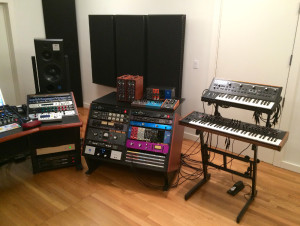
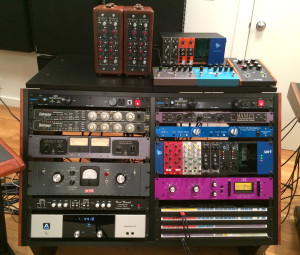
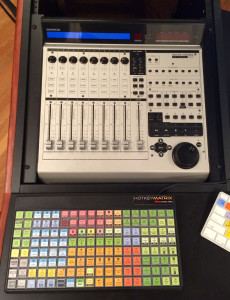
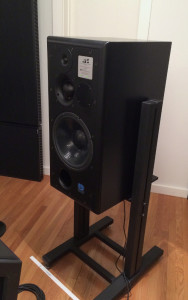
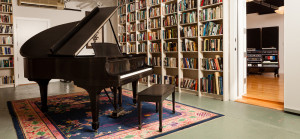
Lino Martinez
May 11, 2015 at 10:53 am (9 years ago)Great article. I recently went through some of the same issues you mentioned with a pair of Adam A77Xs. Do you think your DAC has any significance on your monitoring as well?
Alex Sterling
May 11, 2015 at 6:54 pm (9 years ago)The DAC certainly will make a difference, although I think speakers have a much more substantial impact on the overall sound than the difference between most pro level DAC’s.
Sigmund Abeles
May 12, 2015 at 9:02 am (9 years ago)Joined with your amazingly keen ears, Alex, you have always aimed very high, evolving your technology to the finest tuned. Congrats and keep on refining & growing! The best talent will keep coming through your door.